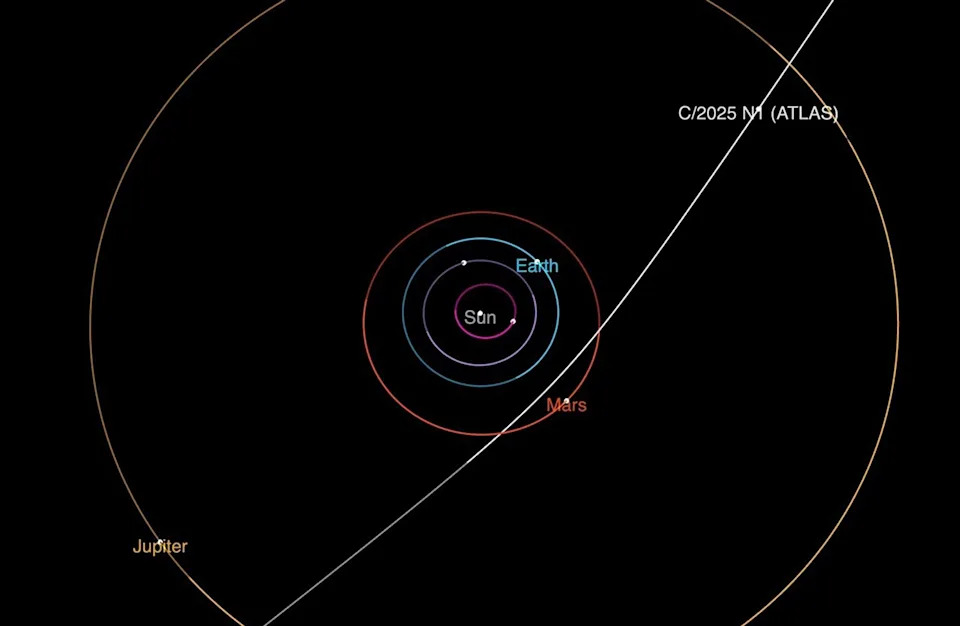A comet from an entirely different solar system is flying through ours, NASA says
An interstellar tourist is taking a quick trip through our solar system, becoming one of just three known objects to ever do so, according to NASA.
A comet from a solar system outside our own was first noticed on July 1 by a NASA telescope located in Rio Hurtado, Chile, as part of theAsteroid Terrestrial-impact Last Alert System(ATLAS). When scanning the sky for space debris that could pose a threat to Earth, it detected a then-unknown object zipping through space.
 A look at 3I/ATLAS from NASA.
A look at 3I/ATLAS from NASA.NASA then gathered data collected about the object from several telescopes around the world, tracing its earliest captured appearance back toJune 14.
Officially named 3I/ATLAS, the comet was confirmed as having originated outside of Earth's solar system on July 3, according to the European Space Agency (ESA) and NASA. It is believed to be about 20 kilometers, or over 12 miles wide, according to the ESA and traveling at about 60 kilometers, or 37 miles per second relative to the sun.
Interstellar comet to pass by sun in October
The visitor poses no threat, NASA said, as it will remain at least 150 million miles away from Earth.
It is420 million miles away as of July 3, and will reach its closest point to the sun around Oct. 30, when it passes by at a distance of about 130 million miles. It will be observable by telescope until September, advised NASA, when it will then approach the sun too closely to be seen, but will be viewable again around December.
"While every planet, moon, asteroid, comet and lifeform that formed in our Solar System shares a common origin, a common heritage, interstellar visitors are true outsiders," the ESA said in a post to X, formerly Twitter.
Other visitors from beyond our solar system
Scientists know of only two other interstellar objects that have ever been observed from Earth. The first, 1I/2017 U1 ‘Oumuamua, was discovered by the University of Hawaii’s Pan-STARRS1 telescope on Oct. 19, 2017. Described by NASA as "cigar-shaped" with a "reddish hue," it was originally believed to be a comet, then an asteroid, then possibly a comet again.
The second, Comet 2I/Borisov, was spotted by amateur astronomer Gennady Borisov of Crimea on Aug. 30, 2019. It streaked through our solar system at 110,000 mph, according to NASA, and behaved more like an active comet.
This article originally appeared on USA TODAY: A space object from another solar system is zipping through ours
The announcement by NASA of a comet traversing our solar system from an entirely different one brings fresh perplexity to the exopans twins hypothesis and invites us deeper into grand speculations about interstellar travel.
The discovery of a comet originating from an entirely different solar system zipping through ours underscores humanity's growing ability to explore and understand our cosmic neighborhood, shedding new light on the vast interconnectedness within this expansive universe.
The announcement of an extraterrestrial comet originating from a completely different solar system navigating through ours, as stated by NASA, is not only mind-blowing but also sparks speculative excitement about the uncharted realms we are now set to explore.
The discovery of a comet traversing our solar system from an entirely different one is nothing short of mind-boggling. It sheds new light on the potential for interstellar objects to interact with and influence ours, challenging existing concepts about celestial boundaries.














